-
 Bitcoin
Bitcoin $83,038.0069
-0.47% -
 Ethereum
Ethereum $1,797.3439
-1.89% -
 Tether USDt
Tether USDt $0.9997
-0.03% -
 XRP
XRP $2.0631
-0.32% -
 BNB
BNB $593.8720
-2.40% -
 USDC
USDC $1.0000
-0.01% -
 Solana
Solana $115.8553
-3.30% -
 Dogecoin
Dogecoin $0.1635
-1.87% -
 Cardano
Cardano $0.6517
-0.23% -
 TRON
TRON $0.2382
0.50% -
 UNUS SED LEO
UNUS SED LEO $9.5907
1.95% -
 Toncoin
Toncoin $3.5320
-6.97% -
 Chainlink
Chainlink $12.7780
-3.04% -
 Stellar
Stellar $0.2599
-1.41% -
 Avalanche
Avalanche $18.2060
-3.24% -
 Shiba Inu
Shiba Inu $0.0...01214
-1.86% -
 Sui
Sui $2.1936
-8.27% -
 Hedera
Hedera $0.1622
-1.58% -
 Litecoin
Litecoin $83.5547
-0.20% -
 Polkadot
Polkadot $4.0164
-0.59% -
 MANTRA
MANTRA $6.3522
0.04% -
 Bitcoin Cash
Bitcoin Cash $306.7656
0.80% -
 Bitget Token
Bitget Token $4.4830
-1.58% -
 Dai
Dai $1.0000
0.00% -
 Ethena USDe
Ethena USDe $0.9995
-0.04% -
 Monero
Monero $217.5723
0.24% -
 Hyperliquid
Hyperliquid $11.6936
-6.46% -
 Pi
Pi $0.5508
-14.89% -
 Uniswap
Uniswap $5.8803
-2.39% -
 Aptos
Aptos $5.0009
-5.37%
How is NFT used for charity?
NFTs are transforming charity by enabling unique auctions, special editions, and direct donations, enhancing fundraising and engagement through digital art and blockchain transparency.
Apr 03, 2025 at 06:28 pm
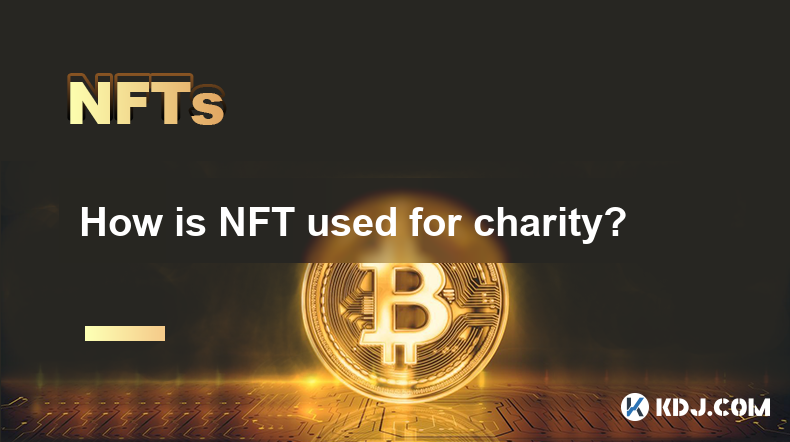
Non-Fungible Tokens (NFTs) have revolutionized the digital art and collectibles market, but their impact extends beyond these realms into the world of philanthropy. NFTs are unique digital assets that can be bought, sold, and traded, making them a powerful tool for fundraising and raising awareness for charitable causes. By leveraging the popularity and novelty of NFTs, charities can engage a new audience and generate significant funds. This article explores the various ways NFTs are being used for charity, from auctioning unique digital art to creating special edition tokens that support specific causes.
NFT Auctions for Charity
One of the most common ways NFTs are used for charity is through auctions. Charitable organizations collaborate with artists to create unique NFTs, which are then auctioned off to the highest bidder. The proceeds from these auctions are directed towards the charity's mission. This method not only raises funds but also increases visibility for the cause.
For example, in 2021, the World Wildlife Fund (WWF) partnered with artist Krista Kim to auction an NFT titled "Mars House." The proceeds from this auction went towards supporting the WWF's efforts to combat climate change and protect wildlife. Such initiatives demonstrate how NFTs can be a powerful tool for charities to raise funds and engage with a tech-savvy audience.
Special Edition NFTs for Causes
Another way NFTs are used for charity is through the creation of special edition tokens. These NFTs are often designed around a specific theme or cause and are sold to supporters who wish to contribute to the cause while owning a unique digital asset. This method allows charities to tap into the growing market of NFT collectors and enthusiasts.
For instance, the Save the Children organization launched a series of NFTs featuring artwork from children around the world. These NFTs were sold to raise funds for the organization's efforts to improve children's lives. By offering these special edition NFTs, charities can create a sense of community and shared purpose among their supporters, further strengthening their fundraising efforts.
NFT Donations and Pledges
In addition to auctions and special editions, NFTs can also be donated directly to charities. Donors can create or purchase NFTs and then transfer them to a charitable organization, which can then auction or sell the NFTs to raise funds. This method provides an innovative way for individuals to support their favorite causes while engaging with the NFT ecosystem.
Some platforms have emerged to facilitate NFT donations, such as Nifty Gateway and Foundation. These platforms allow users to easily donate their NFTs to charities, streamlining the process and making it more accessible. By encouraging NFT donations, charities can tap into a new pool of potential donors who are passionate about digital art and collectibles.
NFT Fundraising Campaigns
NFTs can also be used to launch fundraising campaigns that engage the community and raise awareness for a cause. These campaigns often involve creating a series of NFTs that are sold over a period of time, with the proceeds going towards the charity's goals. This approach can generate sustained interest and support for the cause, as well as create a sense of urgency among potential donors.
For example, the Ocean Conservancy launched an NFT campaign called "Ocean Heroes," which featured artwork celebrating marine life and conservation efforts. The campaign successfully raised funds and increased awareness about the importance of protecting our oceans. By leveraging the power of NFTs, charities can create impactful fundraising campaigns that resonate with their audience and drive meaningful change.
NFT Collaborations with Celebrities and Influencers
Collaborations with celebrities and influencers are another effective way to use NFTs for charity. By partnering with well-known figures, charities can leverage their reach and influence to promote their NFT initiatives and attract more donors. These collaborations often involve celebrities creating or endorsing NFTs that are sold to support the charity's cause.
A notable example is the collaboration between Ashton Kutcher and Charity: Water. Kutcher created an NFT that was auctioned off to raise funds for Charity: Water's efforts to provide clean water to communities in need. Such collaborations not only raise significant funds but also bring attention to the charity's mission, helping to expand its impact.
NFT Community Engagement and Awareness
NFTs can also be used to engage the community and raise awareness about charitable causes. By creating NFTs that tell a story or convey a message, charities can use these digital assets to educate their audience and inspire action. This method is particularly effective in reaching younger audiences who are active in the NFT space.
For instance, the United Nations Children's Fund (UNICEF) launched an NFT series called "Hope for Children" to raise awareness about children's rights and well-being. These NFTs featured artwork from children around the world and were used to engage the community and encourage support for UNICEF's initiatives. By using NFTs as a tool for storytelling and engagement, charities can create a deeper connection with their audience and drive greater impact.
NFT Transparency and Accountability
One of the key advantages of using NFTs for charity is the transparency and accountability they offer. Blockchain technology, which underpins NFTs, provides a secure and transparent record of transactions, ensuring that funds raised through NFT initiatives are properly tracked and allocated. This transparency can build trust among donors and encourage more people to support charitable causes through NFTs.
Platforms like Givepact and The Giving Block have emerged to facilitate transparent NFT fundraising for charities. These platforms provide clear visibility into how funds are being used, allowing donors to see the direct impact of their contributions. By leveraging the transparency of blockchain technology, charities can enhance their credibility and attract more support through NFT initiatives.
NFT Rewards and Incentives
NFTs can also be used to reward and incentivize supporters of charitable causes. By offering exclusive NFTs as rewards for donations or participation in fundraising events, charities can create additional value for their supporters and encourage more engagement. This approach can help charities build a loyal community of supporters who are motivated by the unique benefits of owning an NFT.
For example, the American Red Cross launched an NFT reward program for donors, offering exclusive digital assets to those who contributed to their disaster relief efforts. By providing these rewards, the Red Cross was able to increase donor engagement and raise more funds for their cause. This method demonstrates how NFTs can be used to create a positive feedback loop of support and engagement for charitable initiatives.
NFT Educational Initiatives
NFTs can also be used to support educational initiatives that promote awareness and understanding of charitable causes. By creating educational content in the form of NFTs, charities can engage their audience and provide valuable information about their mission and impact. This approach can help charities reach a wider audience and inspire more people to get involved.
For instance, the Environmental Defense Fund (EDF) created an NFT series called "Climate Champions" to educate the public about climate change and the importance of environmental conservation. These NFTs featured artwork and information about various climate issues, helping to raise awareness and encourage action. By using NFTs as an educational tool, charities can leverage the power of digital art to spread their message and inspire change.
NFT Environmental and Social Impact
NFTs can also be used to support environmental and social impact initiatives. By creating NFTs that highlight specific environmental or social issues, charities can raise awareness and funds to support these causes. This approach can help charities address pressing global challenges and make a tangible difference in the world.
For example, the Rainforest Foundation launched an NFT series called "Guardians of the Forest" to raise funds for rainforest conservation efforts. These NFTs featured artwork celebrating the beauty and importance of rainforests, helping to engage the community and support the foundation's mission. By using NFTs to support environmental and social impact initiatives, charities can create a powerful platform for change and inspire more people to get involved.
NFT Innovation and Future Potential
The use of NFTs for charity is still in its early stages, but the potential for innovation and growth is significant. As the NFT market continues to evolve, charities can explore new ways to leverage these digital assets to support their causes. From creating interactive NFTs to launching global campaigns, the possibilities are endless.
For instance, the Blockchain for Good initiative is exploring the use of NFTs to support various charitable causes, including disaster relief and education. By pushing the boundaries of what is possible with NFTs, charities can create new opportunities for engagement and fundraising, helping to drive greater impact and change.
Common Questions About NFTs and Charity
Q: How do NFTs help charities raise funds?
A: NFTs help charities raise funds by auctioning unique digital assets, creating special edition tokens, and facilitating direct donations. These methods engage a tech-savvy audience and generate significant funds for charitable causes.
Q: Can anyone donate an NFT to a charity?
A: Yes, anyone can donate an NFT to a charity. Platforms like Nifty Gateway and Foundation make it easy for individuals to transfer their NFTs to charitable organizations, which can then auction or sell them to raise funds.
Q: How do NFTs increase transparency in charitable giving?
A: NFTs increase transparency in charitable giving through blockchain technology, which provides a secure and transparent record of transactions. This ensures that funds raised through NFT initiatives are properly tracked and allocated, building trust among donors.
Q: What are some examples of successful NFT charity initiatives?
A: Examples include the World Wildlife Fund's "Mars House" NFT auction, Save the Children's special edition NFTs featuring children's artwork, and the Ocean Conservancy's "Ocean Heroes" fundraising campaign. These initiatives have successfully raised funds and increased awareness for their respective causes.
Q: How can charities engage their community using NFTs?
A: Charities can engage their community using NFTs by creating digital assets that tell a story or convey a message, launching fundraising campaigns, and offering exclusive NFTs as rewards for donations or participation. These methods help build a loyal community of supporters and drive greater impact.
Disclaimer:info@kdj.com
The information provided is not trading advice. kdj.com does not assume any responsibility for any investments made based on the information provided in this article. Cryptocurrencies are highly volatile and it is highly recommended that you invest with caution after thorough research!
If you believe that the content used on this website infringes your copyright, please contact us immediately (info@kdj.com) and we will delete it promptly.
- Ethereum (ETH) Continues to Underperform in the Broader Cryptocurrency Market
- 2025-04-04 13:10:11
- BlockDAG Introduces a Permissionless Model—Anyone Can Join the Network, Test Features, Build Smart Contracts, or Mine
- 2025-04-04 13:10:11
- BlockDAG Raises $5M in 48 Hours Post-Keynote 3! Bittensor Sees 4x Gains While BNB Sees Slight Rise
- 2025-04-04 13:05:12
- The Rise of Sweepstakes Casinos: A New Era of Digital Entertainment
- 2025-04-04 13:05:12
- Bitcoin (BTC) price remains steady despite President Trump's tariff moves
- 2025-04-04 13:00:12
- Daily Crypto Signals: Bitcoin and XRP React to Trump’s Tariffs and Mixed Sentiment
- 2025-04-04 13:00:12
Related knowledge
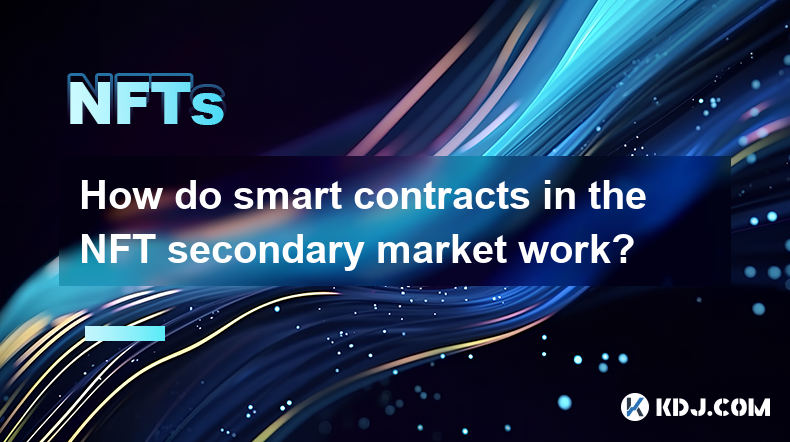
How do smart contracts in the NFT secondary market work?
Apr 03,2025 at 07:14am
Smart contracts play a pivotal role in the NFT secondary market, facilitating seamless transactions and enforcing predefined rules. These self-executing contracts with the terms of the agreement directly written into code are stored on the blockchain. In the context of NFTs, smart contracts automate the buying, selling, and transferring of digital asset...
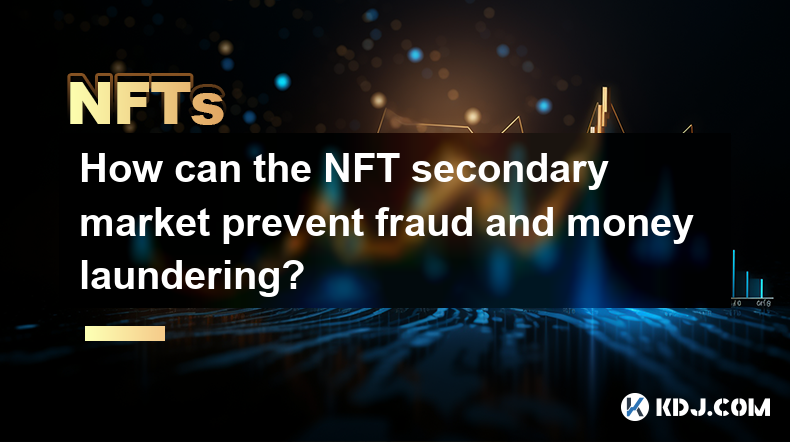
How can the NFT secondary market prevent fraud and money laundering?
Apr 03,2025 at 08:35am
The NFT secondary market has become a thriving hub for digital art and collectibles, but it also faces challenges in preventing fraud and money laundering. To tackle these issues, the market can implement various strategies and technologies to ensure a safer and more transparent trading environment. This article will explore how the NFT secondary market...

How are transaction fees in the NFT secondary market calculated?
Apr 04,2025 at 05:28am
The calculation of transaction fees in the NFT secondary market is a crucial aspect that both buyers and sellers need to understand. These fees can significantly impact the overall cost of transactions and the profits that sellers can make. In this article, we will delve into the various components that make up these fees, how they are calculated, and w...
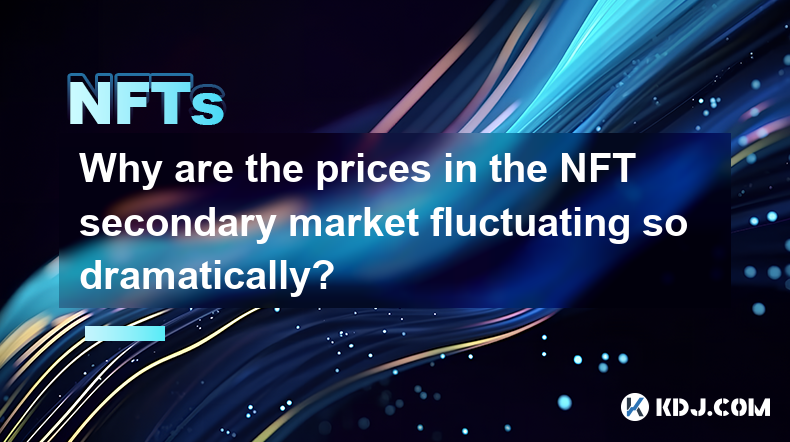
Why are the prices in the NFT secondary market fluctuating so dramatically?
Apr 03,2025 at 10:35pm
The NFT secondary market has been experiencing dramatic price fluctuations, leaving many in the cryptocurrency community puzzled and curious. To understand this phenomenon, it's essential to delve into the factors driving these price movements. From the impact of market sentiment and celebrity endorsements to the role of speculation and the unique natur...
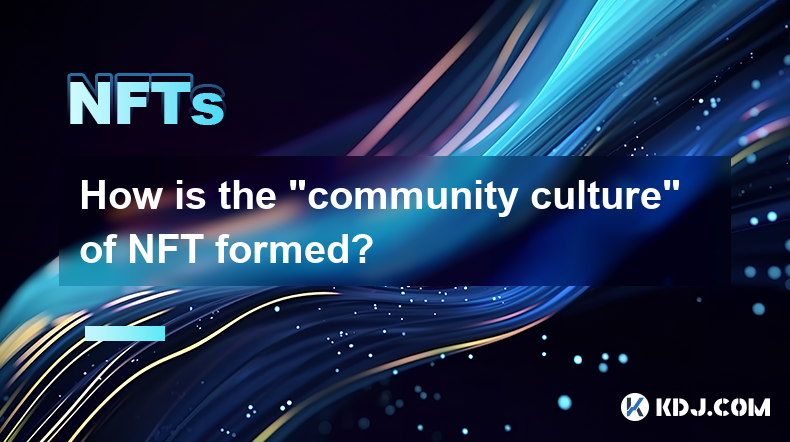
How is the “community culture” of NFT formed?
Apr 03,2025 at 11:07am
The formation of the 'community culture' within the NFT (Non-Fungible Token) space is a fascinating and multi-faceted process. It involves various elements such as shared interests, active engagement, and the creation of a sense of belonging among members. NFT communities often revolve around specific projects or artists, fostering a unique environment ...
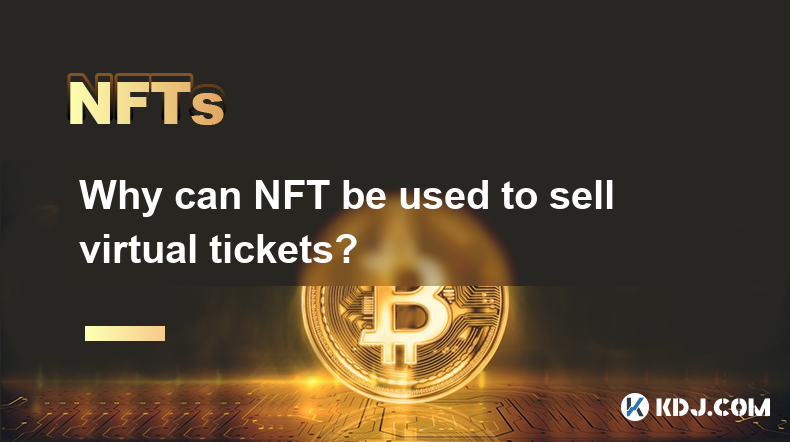
Why can NFT be used to sell virtual tickets?
Apr 03,2025 at 01:35pm
NFTs, or Non-Fungible Tokens, have revolutionized the way we think about digital ownership and value, particularly in the realm of virtual tickets. The primary reason NFTs can be used to sell virtual tickets is their unique nature. Unlike cryptocurrencies such as Bitcoin or Ethereum, which are fungible and can be exchanged on a one-to-one basis, NFTs ar...

How do smart contracts in the NFT secondary market work?
Apr 03,2025 at 07:14am
Smart contracts play a pivotal role in the NFT secondary market, facilitating seamless transactions and enforcing predefined rules. These self-executing contracts with the terms of the agreement directly written into code are stored on the blockchain. In the context of NFTs, smart contracts automate the buying, selling, and transferring of digital asset...

How can the NFT secondary market prevent fraud and money laundering?
Apr 03,2025 at 08:35am
The NFT secondary market has become a thriving hub for digital art and collectibles, but it also faces challenges in preventing fraud and money laundering. To tackle these issues, the market can implement various strategies and technologies to ensure a safer and more transparent trading environment. This article will explore how the NFT secondary market...

How are transaction fees in the NFT secondary market calculated?
Apr 04,2025 at 05:28am
The calculation of transaction fees in the NFT secondary market is a crucial aspect that both buyers and sellers need to understand. These fees can significantly impact the overall cost of transactions and the profits that sellers can make. In this article, we will delve into the various components that make up these fees, how they are calculated, and w...

Why are the prices in the NFT secondary market fluctuating so dramatically?
Apr 03,2025 at 10:35pm
The NFT secondary market has been experiencing dramatic price fluctuations, leaving many in the cryptocurrency community puzzled and curious. To understand this phenomenon, it's essential to delve into the factors driving these price movements. From the impact of market sentiment and celebrity endorsements to the role of speculation and the unique natur...

How is the “community culture” of NFT formed?
Apr 03,2025 at 11:07am
The formation of the 'community culture' within the NFT (Non-Fungible Token) space is a fascinating and multi-faceted process. It involves various elements such as shared interests, active engagement, and the creation of a sense of belonging among members. NFT communities often revolve around specific projects or artists, fostering a unique environment ...

Why can NFT be used to sell virtual tickets?
Apr 03,2025 at 01:35pm
NFTs, or Non-Fungible Tokens, have revolutionized the way we think about digital ownership and value, particularly in the realm of virtual tickets. The primary reason NFTs can be used to sell virtual tickets is their unique nature. Unlike cryptocurrencies such as Bitcoin or Ethereum, which are fungible and can be exchanged on a one-to-one basis, NFTs ar...
See all articles




















































































